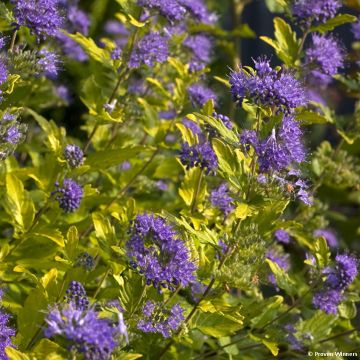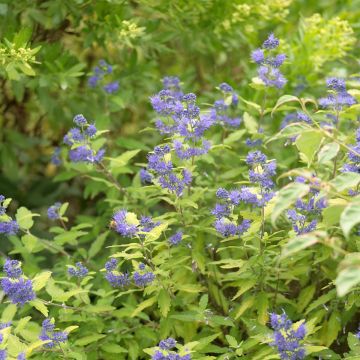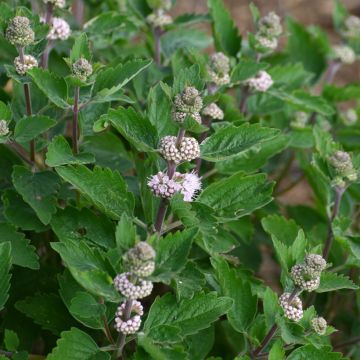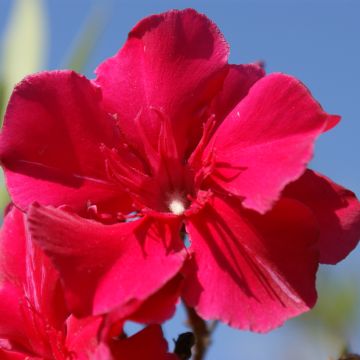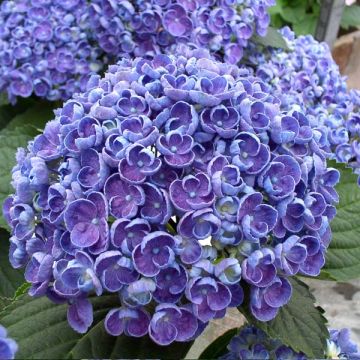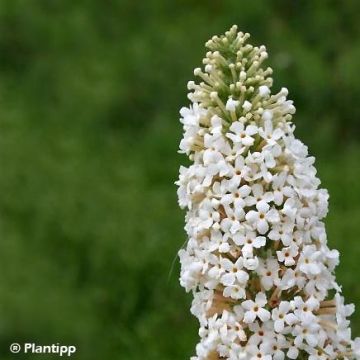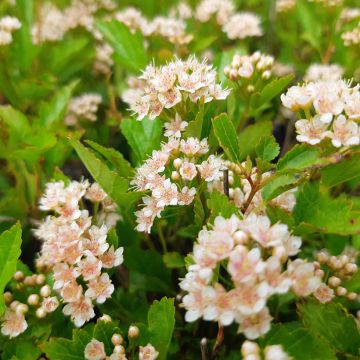

Caryopteris clandonensis Blauer Spatz - Bluebeard


Caryopteris clandonensis Blauer Spatz - Bluebeard
Caryopteris clandonensis Blauer Spatz - Bluebeard
Caryopteris x clandonensis Blauer Spatz (Oiseau Bleu)
Bluebeard, Blue Spirea, Blue Mist Shrub
Why not try an alternative variety in stock?
View all →This plant carries a 24 months recovery warranty
More information
We guarantee the quality of our plants for a full growing cycle, and will replace at our expense any plant that fails to recover under normal climatic and planting conditions.
From €5.90 for pickup delivery and €6.90 for home delivery
Express home delivery from €8.90.
Does this plant fit my garden?
Set up your Plantfit profile →
Description
Caryopteris x clandonensis 'Blauer Spatz', also marketed as Blue Bird Caryopteris, is a variety of blue spirea that charms with its density and abundant flowering, giving it a dark blue cushion-like appearance at the end of summer. This bush has deciduous foliage of a dark greyish-green colour that emits a scent of turpentine when crushed. It is a very good plant for well-drained, even dry and chalky soil, which feeds bees. A great companion for roses, it also fits perfectly in gardens without watering.
Caryopteris x clandonensis 'Blauer Spatz' is one of the hybrids obtained by cross-breeding Caryopteris incana, an Asian shrub known as 'Bluebeard', and the more hardy Caryopteris mongolica, native to colder regions of Mongolia and northern China. All these plants belong to the verbena family. This selection 'Blauer Spatz' forms a naturally very dense bush, wider than tall, about 60cm (23.6in) in height and 75-80cm (29.5-31.5in) in width. It usually blooms from August onwards, producing at the end of its branches fluffy, wide and dense inflorescences, composed of countless small intensely violet-blue flowers with prominent stamens. This flowering is particularly attractive to bees and nectar-feeding insects, and the bush is often visited by many colourful butterflies. The foliage is composed of small, thin and ovate leaves with irregularly toothed edges, arranged in an opposite manner on straight stems. They are greyish-green, quite dark on the upper surface, while the lower surface is fuzzy and more greyish. When crushed, they emit a powerful aroma with resinous notes. This deciduous foliage falls in late autumn.
The 'Blue Bird' Caryopteris works wonders when planted alongside small summer-flowering shrubs that are as frugal as it is: pink Potentillas, yellow or orange, dwarf blue conifers, Ceratostigma plumbaginoides, Perovskias, ground cover roses, shrubby salvias… A vibrant scene can be created at the end of summer by combining Caryopteris with Epilobium canum, asters, tree mint (Elsholtzia stauntoni). A group of 3 shrubs surrounding a brightly coloured remontant rose ('Trocadero', 'Nostalgie') is a sight to behold in September, as their different styles and colours of flowering complement each other perfectly.
Report an error about the product description
Caryopteris clandonensis Blauer Spatz - Bluebeard in pictures
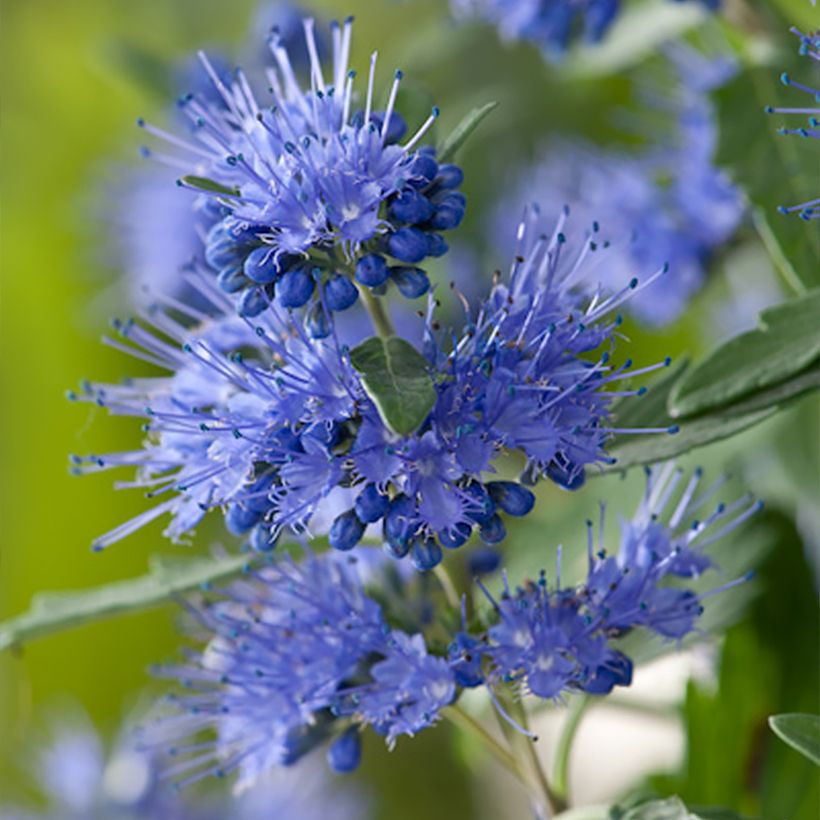



Plant habit
Flowering
Foliage
Botanical data
Caryopteris
x clandonensis
Blauer Spatz (Oiseau Bleu)
Verbenaceae
Bluebeard, Blue Spirea, Blue Mist Shrub
Cultivar or hybrid
Other Caryopteris
Planting and care
Caryopteris 'Blauer Spatz' plants are sun-loving and prefer well-drained soil. They should be planted early in autumn, or in spring in colder regions, in a very sunny location and in a light, well-drained soil, even slightly rocky, but still fairly deep. While Caryopteris is not bothered by limestone, it will be more beautiful in humus-rich soil. A waterlogged soil in winter will greatly harm its hardiness. In well-drained soil, this plant can withstand temperatures as low as -15 °C. Prune in late winter or very early spring to maintain a compact habit and promote the appearance of flowers, on the shoots of the year.
Planting period
Intended location
Care
-
, onOrder confirmed
Reply from on Promesse de fleurs
Summer-flowering shrubs
Haven't found what you were looking for?
Hardiness is the lowest winter temperature a plant can endure without suffering serious damage or even dying. However, hardiness is affected by location (a sheltered area, such as a patio), protection (winter cover) and soil type (hardiness is improved by well-drained soil).

Photo Sharing Terms & Conditions
In order to encourage gardeners to interact and share their experiences, Promesse de fleurs offers various media enabling content to be uploaded onto its Site - in particular via the ‘Photo sharing’ module.
The User agrees to refrain from:
- Posting any content that is illegal, prejudicial, insulting, racist, inciteful to hatred, revisionist, contrary to public decency, that infringes on privacy or on the privacy rights of third parties, in particular the publicity rights of persons and goods, intellectual property rights, or the right to privacy.
- Submitting content on behalf of a third party;
- Impersonate the identity of a third party and/or publish any personal information about a third party;
In general, the User undertakes to refrain from any unethical behaviour.
All Content (in particular text, comments, files, images, photos, videos, creative works, etc.), which may be subject to property or intellectual property rights, image or other private rights, shall remain the property of the User, subject to the limited rights granted by the terms of the licence granted by Promesse de fleurs as stated below. Users are at liberty to publish or not to publish such Content on the Site, notably via the ‘Photo Sharing’ facility, and accept that this Content shall be made public and freely accessible, notably on the Internet.
Users further acknowledge, undertake to have ,and guarantee that they hold all necessary rights and permissions to publish such material on the Site, in particular with regard to the legislation in force pertaining to any privacy, property, intellectual property, image, or contractual rights, or rights of any other nature. By publishing such Content on the Site, Users acknowledge accepting full liability as publishers of the Content within the meaning of the law, and grant Promesse de fleurs, free of charge, an inclusive, worldwide licence for the said Content for the entire duration of its publication, including all reproduction, representation, up/downloading, displaying, performing, transmission, and storage rights.
Users also grant permission for their name to be linked to the Content and accept that this link may not always be made available.
By engaging in posting material, Users consent to their Content becoming automatically accessible on the Internet, in particular on other sites and/or blogs and/or web pages of the Promesse de fleurs site, including in particular social pages and the Promesse de fleurs catalogue.
Users may secure the removal of entrusted content free of charge by issuing a simple request via our contact form.
The flowering period indicated on our website applies to countries and regions located in USDA zone 8 (France, the United Kingdom, Ireland, the Netherlands, etc.)
It will vary according to where you live:
- In zones 9 to 10 (Italy, Spain, Greece, etc.), flowering will occur about 2 to 4 weeks earlier.
- In zones 6 to 7 (Germany, Poland, Slovenia, and lower mountainous regions), flowering will be delayed by 2 to 3 weeks.
- In zone 5 (Central Europe, Scandinavia), blooming will be delayed by 3 to 5 weeks.
In temperate climates, pruning of spring-flowering shrubs (forsythia, spireas, etc.) should be done just after flowering.
Pruning of summer-flowering shrubs (Indian Lilac, Perovskia, etc.) can be done in winter or spring.
In cold regions as well as with frost-sensitive plants, avoid pruning too early when severe frosts may still occur.
The planting period indicated on our website applies to countries and regions located in USDA zone 8 (France, United Kingdom, Ireland, Netherlands).
It will vary according to where you live:
- In Mediterranean zones (Marseille, Madrid, Milan, etc.), autumn and winter are the best planting periods.
- In continental zones (Strasbourg, Munich, Vienna, etc.), delay planting by 2 to 3 weeks in spring and bring it forward by 2 to 4 weeks in autumn.
- In mountainous regions (the Alps, Pyrenees, Carpathians, etc.), it is best to plant in late spring (May-June) or late summer (August-September).
The harvesting period indicated on our website applies to countries and regions in USDA zone 8 (France, England, Ireland, the Netherlands).
In colder areas (Scandinavia, Poland, Austria...) fruit and vegetable harvests are likely to be delayed by 3-4 weeks.
In warmer areas (Italy, Spain, Greece, etc.), harvesting will probably take place earlier, depending on weather conditions.
The sowing periods indicated on our website apply to countries and regions within USDA Zone 8 (France, UK, Ireland, Netherlands).
In colder areas (Scandinavia, Poland, Austria...), delay any outdoor sowing by 3-4 weeks, or sow under glass.
In warmer climes (Italy, Spain, Greece, etc.), bring outdoor sowing forward by a few weeks.










































